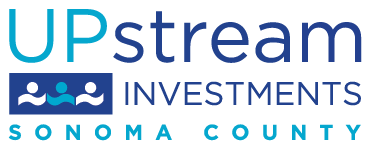YouThrive
The mission of Sunny Hills Services’ YouThrive program is to build prosocial skills and resilience of youth who are at risk of increased delinquency, crime and gang involvement.
The program's goals are to:
• Address the internal and external developmental infrastructure of youth served within four life domains: personal, interpersonal, educational and vocational;
• Facilitate the development of self-worth, self-confidence and the critical social competencies of problem solving, moral reasoning, decision-making and self-control;
• Promote the development of healthy and strong relationships with family, friends and community;
• Instill the value of a positive work ethic and its impact on educational and vocational outcomes;
• Bolster the Search Institute’s Developmental Assets in youth; and
• Promote leadership development through modeling, mentoring and structured and unstructured leadership opportunities.
YouThrive serves Sonoma County middle school and high school students who possess numerous risk factors for gang involvement (see above sections), as well as those who are already involved with gangs. The vast majority of participants are Latino males aged 12-16 years. Sixty-five percent of the youth served come from single-parent homes, and 90% come from low-income households; both of these characteristics are considered risk factors for gang involvement.
Middle and high school counselors and teachers are the primary referral source (75%) of participating youth. They refer to YouThrive students who are exhibiting disruptive or problem behaviors, such as angry outbursts, bullying, frequent detention, frequent suspension and/or behaviors fitting the school's criteria for gang involvement.
Other referral sources are: parents (5%), juvenile justice and law enforcement staff (10%). Ten percent of participating youth refer themselves to YouThrive.
Accepted to the Portfolio: March 2015
Target Outcomes
Short Term Outcomes
- Increased school attendance
- Improved GPA
- Decreased disciplinary referrals at school
- Increased ability to resist gang involvement
Long Term Outcomes
- Higher rates of high school completion
- Reduced juvenile arrests
- Decreased gang membership
- Increased connectedness
Target Population
Demographics
- Early Childhood (0 - 5)
- Kindergarten - 12th Grade
- Transitional Age Youth (16 - 24)
- Adult (25 - 60)
- Older Adult (60+)
- Families with Children (0 - 5)
- Families with Children (K -12th)
- Teachers and Students (preschool)
- Teachers and Students (K - 12th)
Service Area
- Southwest (District 2)
- Central (District 3)
Information
Program Funders
Many thanks to the following funders for making this program possible.
Local Funders
- Active 20-30 Club
- AHS Foundation
- Petaluma Community Foundation
- Sunny Hills Services
Other Funders
- Bank of America Foundation
- Bay Area Sports Hall of Fame Youth Fund
- Carl Gellert and Celia Berta Gallert Gellert Foundation
- Exchange Bank; Ernest L. and Ruth W. Finley Foundation
- Exchange Bank


 Translate
Translate